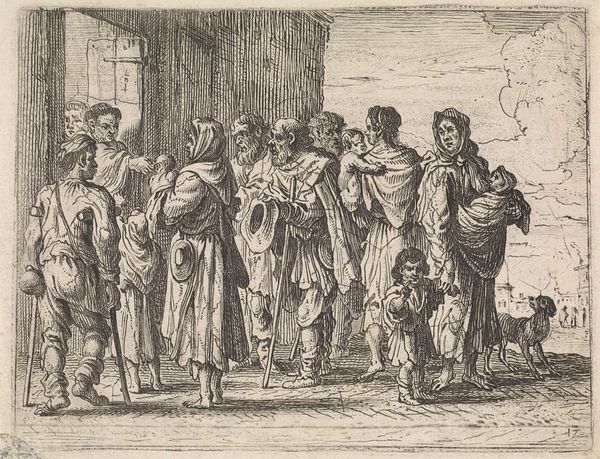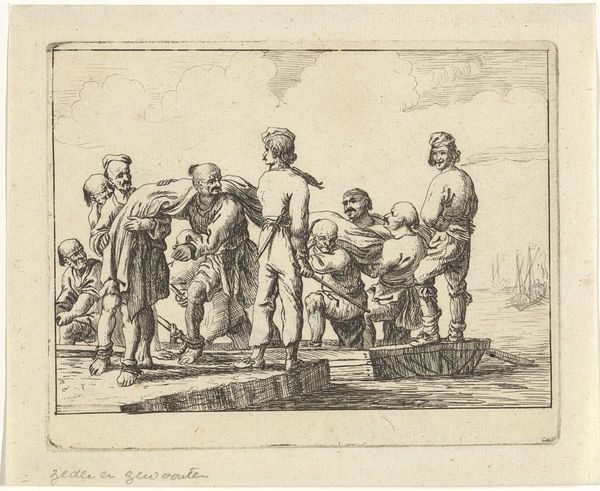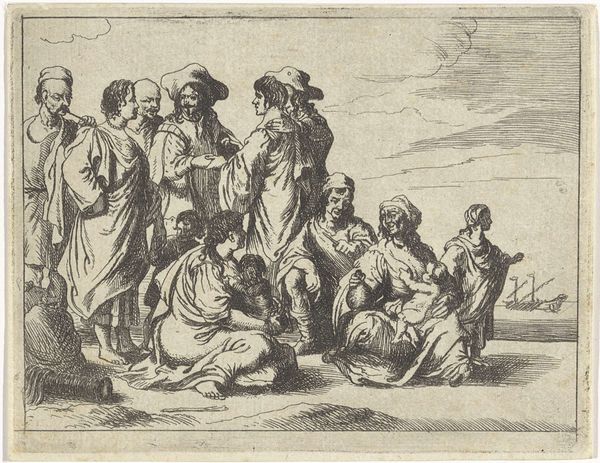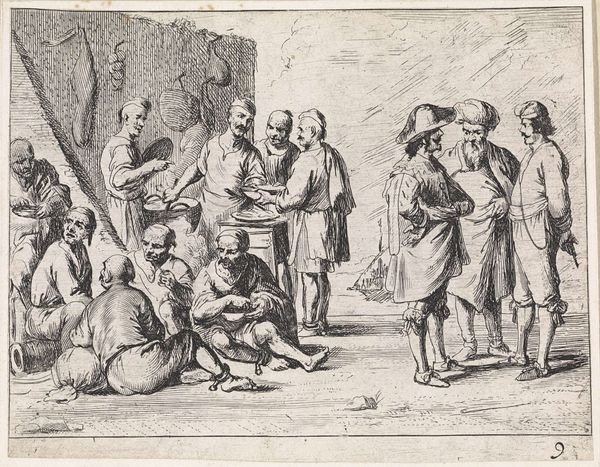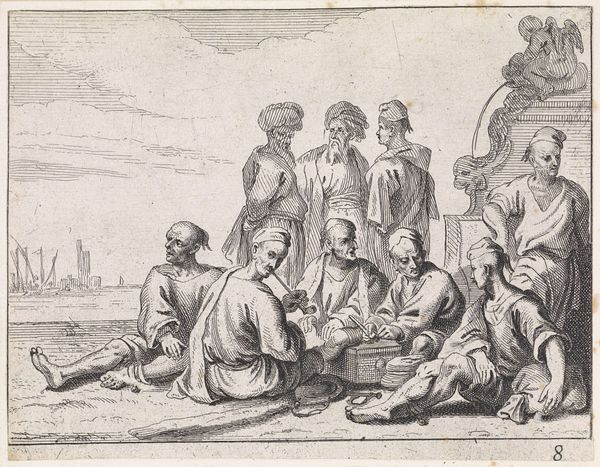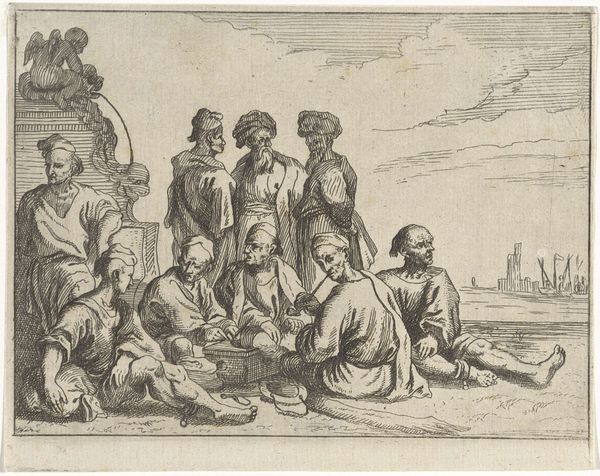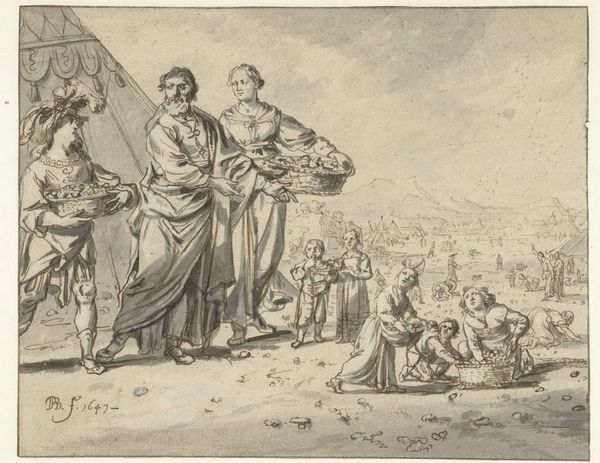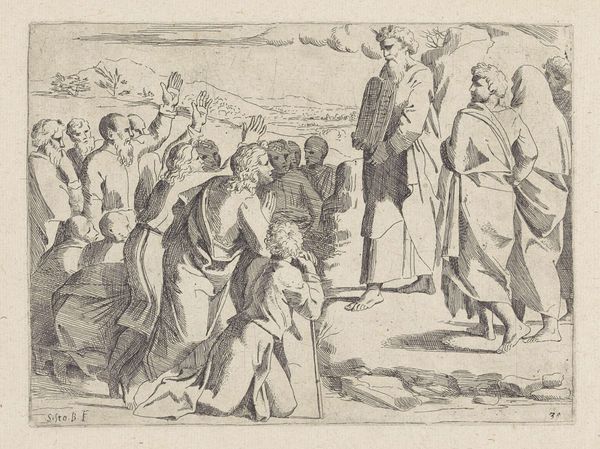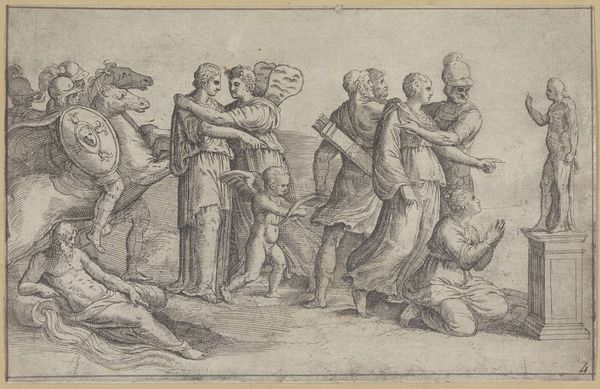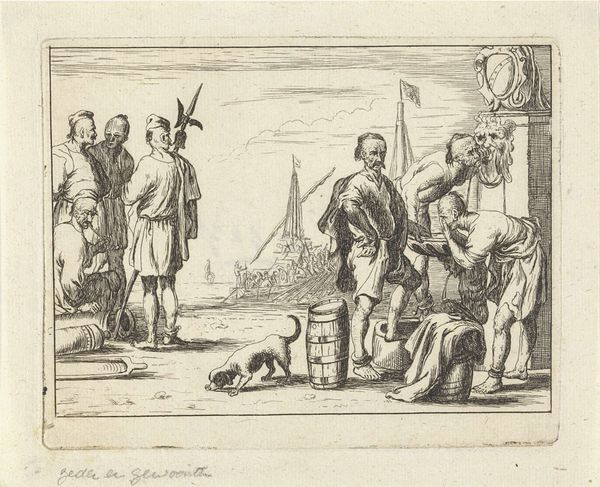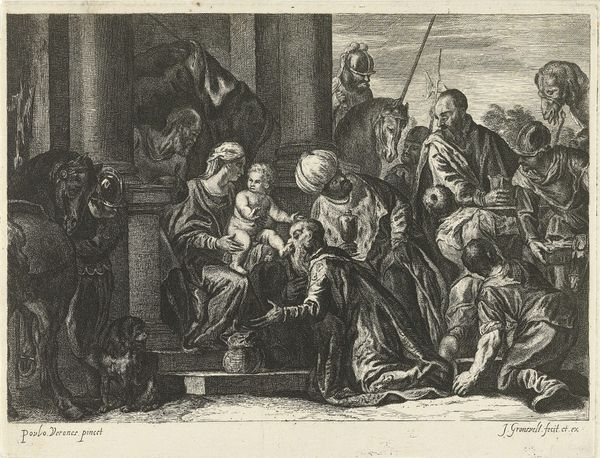
print, etching
#
baroque
# print
#
etching
#
genre-painting
#
history-painting
Dimensions: height 113 mm, width 147 mm
Copyright: Rijks Museum: Open Domain
Editor: This etching by Cornelis de Wael, created in 1647, is titled "Islamitische galeislaven dragen een zeil" or "Islamic Galley Slaves Carrying a Sail". The figures look burdened, and the whole scene is tense. What historical context is crucial to understanding the power dynamics in this image? Curator: Given the title, the artist presents the lives of Islamic galley slaves through a lens of historical and social oppression. These galley slaves, likely captured in naval conflicts, were forced to power ships, experiencing brutal conditions. It’s important to note how European artists often portrayed "the other," frequently emphasizing subjugation to reinforce existing power structures. What elements in the composition draw your eye, and how might they contribute to the narrative? Editor: The figures’ bare feet in chains really stand out, along with their strained postures as they struggle to carry this huge sail. It just feels dehumanizing. Curator: Exactly. De Wael emphasizes their physical toil, reducing them to laborers defined by suffering. The print participates in the historical narrative, justifying and reinforcing early modern European power over other cultures. How do you see this piece interacting with current discussions surrounding representation and cultural appropriation? Editor: Well, today we're much more aware of the ethics of representation, especially the danger of perpetuating stereotypes or ignoring the voices of marginalized groups. This etching raises questions about who has the right to tell these stories. Curator: Precisely. It’s a potent reminder of how art can reflect and shape societal attitudes, necessitating critical analysis even centuries later. I've learned from you that the piece prompts ethical questions about spectatorship and representation, highlighting the importance of diverse voices in historical interpretation. Editor: And I understand the crucial role of socio-political forces in understanding how these historical images were consumed and how they shaped perception!
Comments
No comments
Be the first to comment and join the conversation on the ultimate creative platform.
